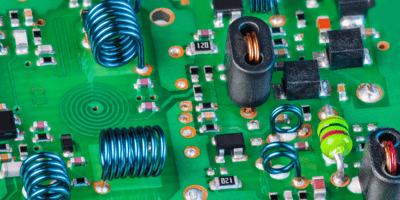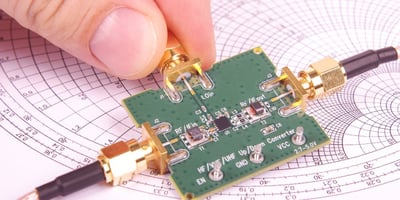We live in an increasingly connected world where having a good signal is the expected norm. For...
Engineer’s Guide to Selecting High-Performance Microwave Components
Surveillance and recon? Invisible warfare? Space exploration? These are not just the plots of the latest sci-fi thriller, but real-world applications where high-performance microwave components are utilized. This type of advanced tech is the new normal, and you are likely working on one of them.
Since the end of the pandemic, the microwave component industry has grown significantly. By 2030, it’s projected to increase at a steady compound growth rate of 5.9%. But that probably doesn’t surprise you. The modern world is built on communication, and microwave components are the building blocks.
Whatever the project, as an engineer, you know that the right microwave components are vital. And you know that finding the right solution is more than just cost, quality, or supplier. It’s about finding a partner company that values innovation as much as you do and knows the right needs of your project, from use case to scope to cost to production.
Here, we offer a guide to selecting high-performance microwave components, unless you need an off-the-shelf item. Ultimately, making the right decision here can be transformative for your project’s success.
Step 1: Document Your Application’s Needs
First, let’s start with the basics. What is your application’s use case and goal?
Understanding your exact application’s specific needs is the first step in selecting high-performance microwave components. Whether they are analog or digital, focus on several key factors during your analysis:
-
Frequency Range and Power Levels: Start by identifying the specific frequency range your application operates within and the power levels it requires.
-
Signal Types: Determine whether your application uses continuous wave or pulsed signals.
-
Environmental Conditions: Consider temperature, humidity, vibration, and any other environmental conditions. These dictate durability and reliability. How protected must your microwave components be in your application’s use case?
-
Component Size and Project Constraints: These basic aspects guide you toward either off-the-shelf or custom solutions that meet your exact specifications.
-
Compliance and Standards: Identify any relevant industry standards or regulatory compliance requirements, such as the MIL-STD for military applications.
Still, trying to figure out what this looks like in practice? For bandpass filters, Q Microwave provides a PDF on our website for documenting specifications. You can use this document as a template for creating a checklist for RF bandpass filters – which might be part of your subsystem components.
Step 2: Connect with an Experienced RF Microwave Component Supplier
Next, it’s time to source your components. This phase is a meticulous process, and you must take your time as you move through it.
Identify Potential Suppliers
Begin by compiling a list of potential suppliers known for their excellence. Look for suppliers known for innovation, reliability, and customer service. You can find this through resources like industry directories, trade shows, and your professional network. Spending time understanding the best in the industry is your pathway to getting the best overall deal possible.
Engage in Technical Consultations
Once you have shortlisted potential suppliers, the next step is to talk to the manufacturer. Talk with engineers or sales professionals about the specifics of your project requirements and use case(s).
This step is how you’ll address any challenges you may face, like turnaround time, costs, or packaging needs. A supplier worth their salt will not only listen but provide insightful feedback and suggestions, without hidden fees down the line. This ensures success during the project execution.
Evaluate Customization and Support Services
Remember, your project may have unique requirements that off-the-shelf products can’t meet. Ask your supplier how they tailor their offerings to suit specific client needs. This process is also a way to audit the quality of their support. The ideal supplier will be flexible to customization and have a strong support infrastructure. They might also have unique in-house capabilities to cut down on costs elsewhere in the process.
Step 3: Production
Now it’s time to finalize the quote. Approach this step with a comprehensive view of the project. Consider the total cost – not just the purchase price, but include the shipping costs, lead times, and other expenses.
However, finding the right microwave components goes beyond finding the right price. The goal here is to procure components for your application – and establish a reliable relationship for future projects. A sustained partnership can mean competitive pricing, priority support, and early access to new technology.
Find a partner who’s as excited about new and innovative tech as you are. Work with them towards a vision of a dynamic and exciting future, such as the continued evolution of military technology.
At Q Microwave, we have a proven process built on transparency. There are no hidden fees, and when you work with us, you get a clear picture of your project journey from the start.
For a step-by-step breakdown of our overall process, read this article.
Choose Your Path in RF Microwave Component Selection
Just like a vehicle, computer, or any other form of machinery, the quality of an RF subsystem or integrated microwave assembly is only as good as the sum of its parts. Time spent researching and understanding the best components is time well spent. That’s how you find long-term success.
For over 25 years, Q Microwave has been a trusted partner for creating innovative RF filters and subsystems. Proudly, we lead our clients forward to the future of RF engineering.
Want to know how? Let’s talk about how the Q Microwave approach can fill your project needs.



